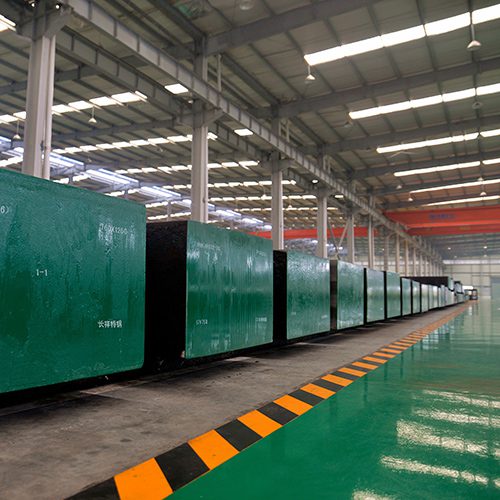Hot forging mold steel is subjected to extreme conditions during the forging process, including high temperatures, repeated thermal cycling, and mechanical stresses. To ensure a long service life for the mold, the steel used needs to possess specific properties that allow it to withstand these harsh conditions. Here are key properties that hot forging mold steel should have for an extended service life:
- High Hardness: The mold should have sufficient hardness to resist wear and abrasion caused by the repeated contact with hot metal. Higher hardness helps maintain the mold’s shape and integrity over an extended period.
- Hot Hardness and Toughness: Hot forging involves exposure to elevated temperatures. The steel should retain its hardness and toughness at these high temperatures to resist deformation, cracking, and thermal fatigue.
- Heat Resistance: The ability to withstand high temperatures without softening or losing hardness is crucial. Heat resistance ensures that the mold can endure the intense heat generated during the forging process without degradation.
- Wear Resistance: Hot forging molds experience significant wear due to the abrasive nature of hot metals. Wear-resistant steel ensures that the mold maintains its shape and surface finish over many forging cycles.
- Thermal Conductivity: Good thermal conductivity is essential for efficient heat dissipation from the mold surface. This property helps prevent localized overheating, reduces thermal fatigue, and ensures more uniform heating and cooling.
- Dimensional Stability: The mold steel should exhibit minimal dimensional changes during heating and cooling cycles. Dimensional stability is crucial for maintaining the accuracy and precision of the forged parts.
- High Strength: The mold should have sufficient strength to withstand mechanical stresses, such as pressure and impact, without deformation or failure. High strength contributes to the mold’s overall durability.
- Fatigue Resistance: Hot forging involves repeated loading and unloading cycles. Fatigue-resistant steel helps the mold withstand these cyclic stresses without developing cracks or fractures.
- Corrosion Resistance: While not as critical as in some other applications, corrosion resistance is still beneficial to prevent rust and corrosion, especially in environments where moisture is present.
- Machinability: Easy machinability is essential for the manufacturing and maintenance of the molds. It allows for precision machining and the creation of intricate mold features.
Commonly used hot forging mold steels include H13, H11, H21, and other high-alloy steels designed specifically for hot work applications. The selection of the steel grade depends on factors such as the type of forging process, operating temperatures, and the specific requirements of the forged parts. Regular maintenance, proper heat treatment, and careful handling are also critical factors in ensuring the longevity of hot forging molds.

